10. Apollo (Parnassius apollo)
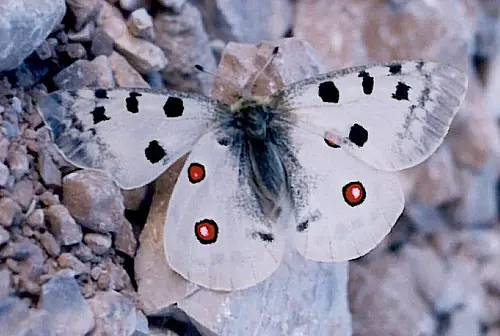
The Apollo, or Mountain Apollo, is primarily found in the mountains of Europe, where it prefers to flit about in flowery meadows and pastures, showing off its gorgeous wings with red and black-edged “eye” shapes. Unfortunately, it is on the threatened animals list and protected in places such as Liechtenstein, Poland, and the Czech Republic. It was one of the first animals in Finland to be declared an endangered species. As its population decreased dramatically there and in Sweden, many people believed they were inflicted with a disease; however, some people are starting to wonder if it is due to things related to acid rain.
9. Black Swallowtail (Papilio polyxenes)
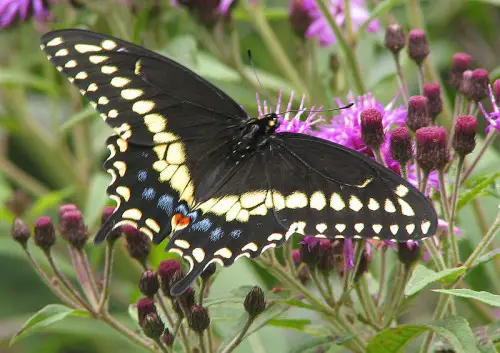
Also known as the American Swallowtail or the Parsnip Swallowtail, this butterfly is known for being the state butterfly of Oklahoma. There are differences between the two sexes: the female having a row of yellow dots and an iridescent blue band along her wings, while the male having a yellow band on the edge of his. Because they are mostly black with hints of colour, they have a rather understated eloquence.
8. Giant Swallowtail (Papilio cresphontes)
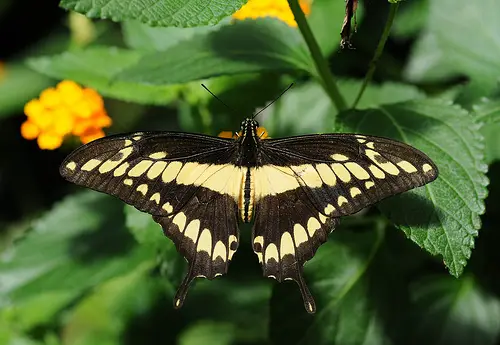
The Giant Swallowtail is a common butterfly throughout North America. Its caterpillars are known by the names Orange Dog or Orange Puppy, which is due to the devastation they can cause to a farmer’s crop. It is the largest butterfly in both the United States and Canada, having a wingspan that can get to be almost six inches. The wings of these butterflies are a dark, almost chocolate colour brown with yellow striping and an “eye” on the tail of each wing. The caterpillar is quite interesting as well, especially as it is capable of taking on the appearance of a small snake and having a fake head and set of eyes.
7. Queen Victoria’s Birdwing (Ornithoptera victoriae)
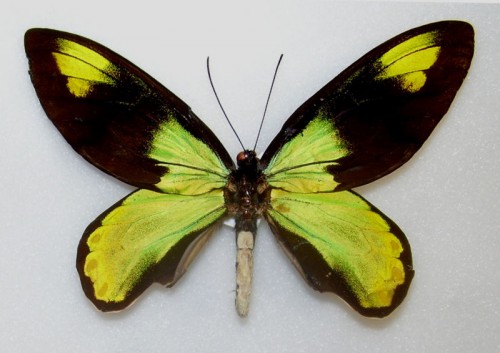
The Queen Victoria’s Birdwing is a variety of butterfly found on the Solomon Islands and on the Bougainville Island of Papua New Guinea. As a birdwing variety, it is a protected species though it is not incredibly rare. Its fore wings are black, while the hind wings are green with a black edging. The female is significantly larger than the male and of a slightly different colouring, such as being mostly black or brown with white and yellow spots. The male is mostly noted for being having large green parts of its wings with golden spots.
6. Scarce Swallowtail (Iphiclides podalirius)

Also known as the Sail Swallowtail or Pear-tree Swallowtail, it is commonly found in the open woodlands, fields, and gardens. With the exception of the northern region, it is found all over Europe and as far as western China. When they are found in the floodplains in Slovakia, they are thought to be indicators showing that the grassland habitats are well-preserved. However, the species is becoming more rare as clearing continues. It is protected in Germany, Russia, Poland, Luxembourg, Hungary, the Czech Republic, Slovakia, and parts of Austria under the title of “rare-endangered” or “vulnerable.”
5. Spicebush Swallowtail (Papilio troilus)
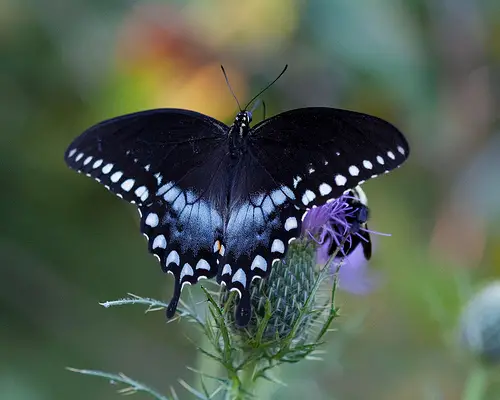
Found in the eastern United States, the Spicebush Swallowtail is recognised as the state butterfly of Mississippi. They are primarily black and have spoon-shaped tails, with differences between the two sexes. Males are mostly noted for their bright green hind-wings, while females tend to be an iridescent blue. Both may have ivory or orange spots. Their primary habitat tends to be deciduous forests or woody swamps with lots of shade.
4. Zebra Swallowtail (Eurytides marcellus)
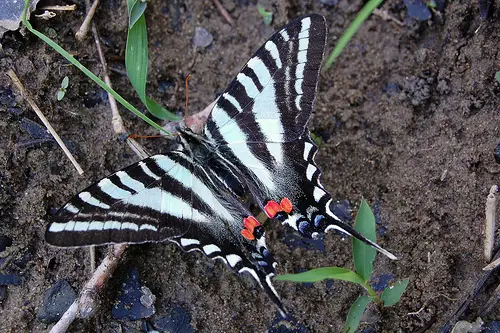
The Zebra Swallowtail is found primarily in the eastern part of North America and is the state bird of Tennessee. Named for its coloring, it has triangular wings, long tails, and two red and blue markings on their backs. There are two forms, depending on the seasons. During spring, their wings proudly show more white with small black tails. In the summer, they are mostly black with long and white tails. They prefer to glide around savannah, grassy fields and open woodlands.
3. Morocco Orange Tip (Anthocharis belia)
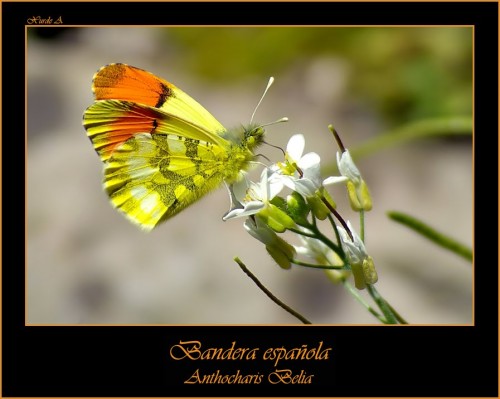
This butterfly is found in Northwestern Africa, primarily in places such as Tunisia, Morocco, and Algeria. However, due to geographic proximity, it can also be seen in southern France, Spain, and Portugal. The tips of its fore wings are a bright orange while the rest of it remains a creamy shade of white. They don’t like to settle down very frequently, however; it seems that they quite enjoy moving, reminiscent of young children.
2. Lesser Fiery Copper (Lycaena thersamon)
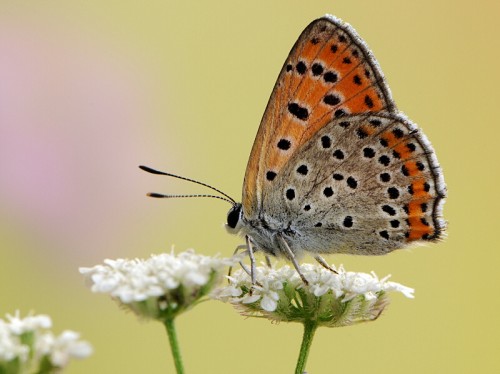
This orange-red butterfly is found primarily somewhere between Eastern Europe to north-western China and in places such as Italy and Mongolia. They prefer to live in flowering meadows and open fields. Though they are mostly a red-orange, they all have different markings. Some can be found with bits of purple on their tails, and the dark spots can be in almost any pattern.
1. Green Underside (Glaucopsyche alexis)
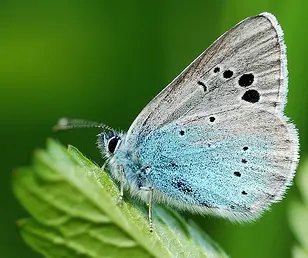
It is also known as the Green-Underside Blue. It is commonly found throughout Europe in warm, flowery meadows. They often live as close as possible to their hostplants, rather than flying far away from them. It is a greyish colour with, appropriately, a green-blue underside. They often have dark spots on their fore wings. Though beautiful, it does not get very large; the adults often stay small.
Source
